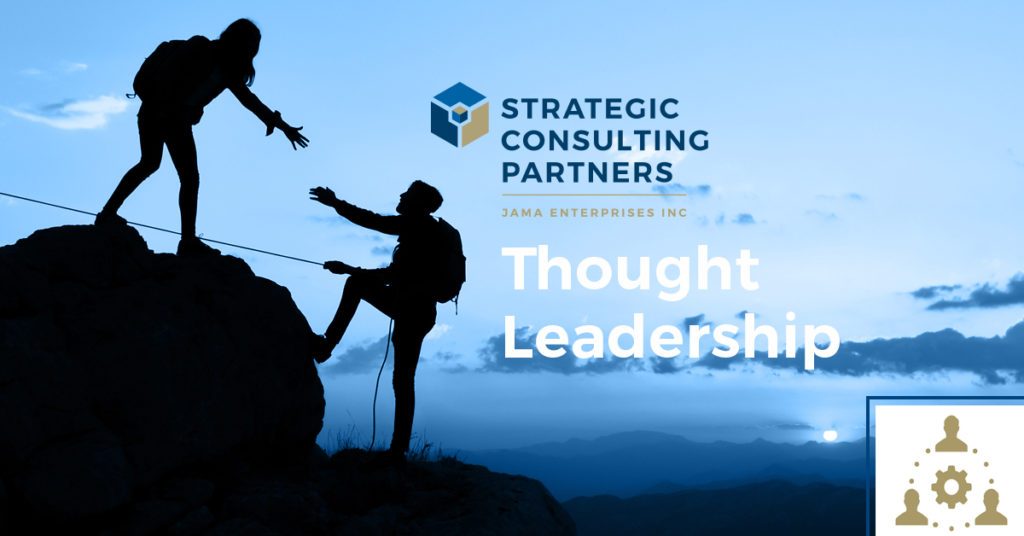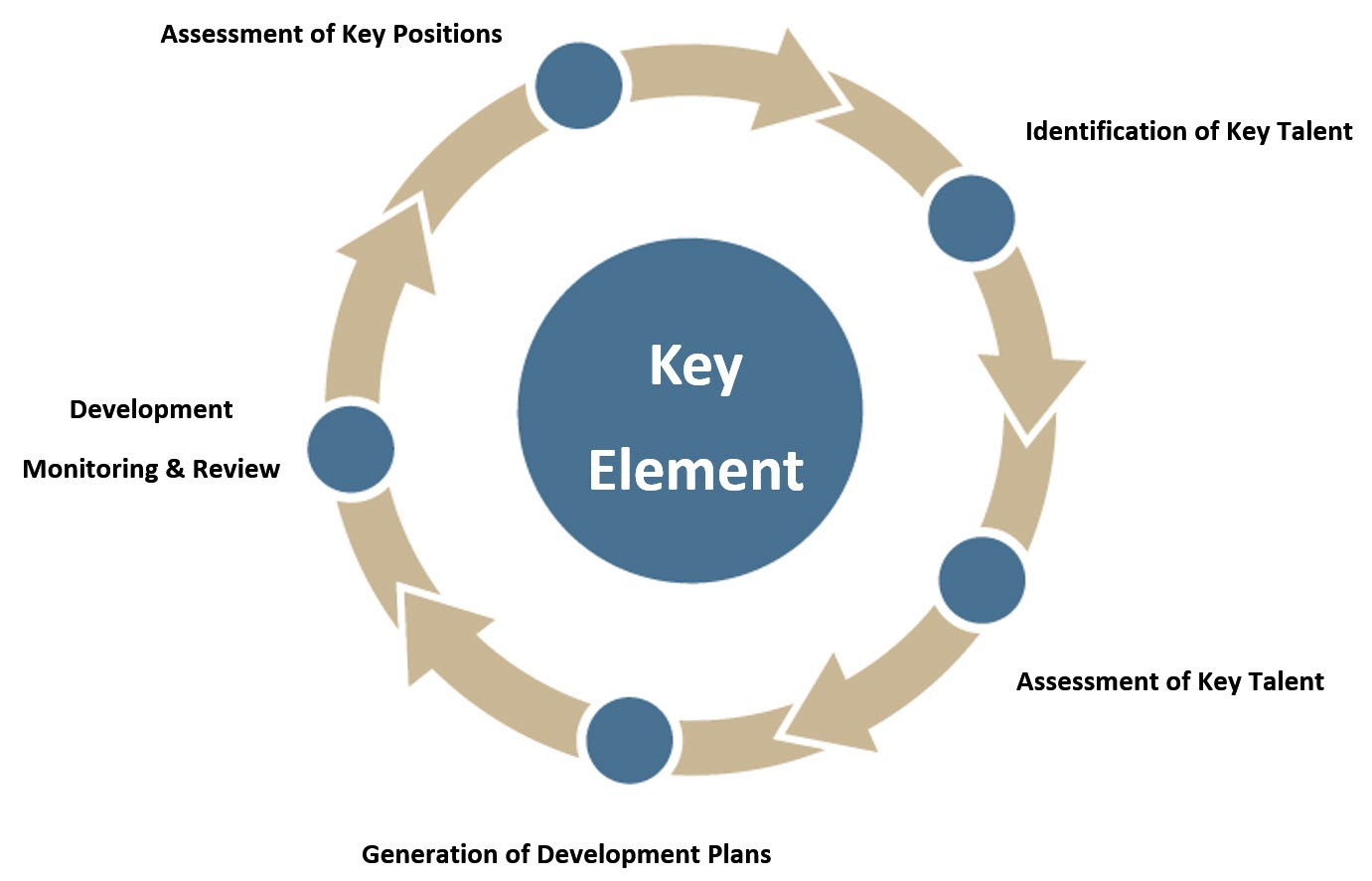Succession Planning Can Help Future-Proof Your Organization
May 21, 2019 | Thought Leadership

Succession planning is, simply put, the process of identifying, training and developing talent within your organization so that you have a deep bench of “leaders on the rise” who can take over when valued employees retire, resign or are fired from their jobs. While it was once carried out primarily in small- and mid-sized family-owned or tightly controlled private companies, succession planning today is increasingly important to organizations of all types and all sizes.
The Top Three Benefits of Succession Planning
Succession planning ensures that organizations are prepared for the inevitable knowledge drain that will happen in the future.
Baby boomers are retiring, skilled workers are leaving in record numbers to seek better opportunities, and workers are being fired or laid off for underperformance or other reasons. Without a succession plan, organizations will fall behind in their bid to attract the best and the brightest to lead their teams.
Succession planning helps reduce turnover.
Employee turnover rates are at record high levels, according to research conducted by the Work Institute. Its “2018 Retention Report: Truth & Trends in Turnover” states that employee turnover costs U.S. employers an estimated $600 billion annually. Succession planning gives employees the guidance, coaching and training they need and want to grow and advance in their current organizations.
Succession planning aligns workforces.
Especially when it is part of formal Human Capital and Workforce Development strategies, succession planning improves communication within departments and company-wide, increases employee retention and productivity, and boosts morale.
The process of planning for the future ensures that you have the skills, knowledge and competencies to support your organization’s mission in the future. Strategic Consulting Partnership has worked with a number of organizations on their succession plans. Most clients were motivated to start planning for the future because of real or feared shortage of leaders; a recognition of the importance of retaining highly skilled talent; a growing number of retirement-ready personnel; shifting skill requirements; lack of employee-organization alignment; and a tight labor market.
Although leadership in organizations of all types and all sizes recognize that it is far more efficient to guide, train, coach, motivate, and develop leaders from within than it is to hire from outside, many leaders have put off the decision to implement succession planning processes.
Start the process now if two or more common symptoms appear in your organization
You may think that succession planning is not right for your organization – at least not right now. We’ve heard feedback on more than one occasion why succession planning wasn’t right, at least not at the time it was being discussed. Consider these typical comments:
Common Reasons Given for Resisting the Succession Planning Process
“We’re focused mainly on meeting our annual sales targets – not so much on the distant future.”
“We’re not there yet. Our executive team is still pretty young and everything is going well.”
“We really don’t have time to focus on long-range planning.”
Here at Strategic Consulting Partners, we understand. We appreciate the fact that leaders are often focused on overcoming shorter-term obstacles to growth. But almost as often as we encounter leaders who resist thinking about the long-term viability of their organizations, we encounter leaders who are open to learning more about succession planning. We engage them in conversations about the “common symptoms” that point toward the wisdom of succession planning sooner rather than later.
Symptoms that Indicate It is Time to Design a Succession Plan
- Departures of senior leaders will escalate in the next three to five years.
- There is no system in place to respond quickly to sudden losses (death disability, resignation), so it will take a long time to find suitable replacements.
- The time required to fill positions is unknown or perceived by managers to be too long.
- Managers complain they have trouble finding people who are well-prepared for promotion into leadership roles.
- Workers complain that promotion decisions are made unfairly or capriciously.
- Women, minorities and other groups protected by law are not properly represented at various levels and in various functions throughout the organization.
- Critical turnover (the percentage of high-potential workers leaving) is higher than the number of fully successful yet “average” workers leaving.
The wisdom of moving forward with succession planning sooner rather than later helps ensure not only the long-term success of your organization, it also reaps shorter-term benefits: a collaborative spirit throughout the entire organization; open and well-used intra-and inter-departmental communication channels; leaders-in-training programs that result in lower turnover; overall improvement in day-to-day operations; and higher rates of employee satisfaction.
So where to start?
The following graphic illustrates the key elements of succession planning. While the process varies from one organization to the next, these five elements form the core of any plan:

The team at Strategic Consulting Partners is comprised of master strategists, human capital experts, trainers, and coaches – each of whom has at least 15 years of experience in designing and implementing succession plans and workforce development projects. While individual clients have different organizational structures and different objectives – hence requiring a certain degree of customization – we build our programs around a common set of steps to guide you on your way to a successful, “future-proof” organization.
Ten key succession planning steps to “future-proof” your organization
- Clarify the senior leaders’ expectations and preferences for a succession program. A fundamental mistake, and a formula for disaster, is to dump the responsibility for the succession effort on the Human Resources department. While HR representatives and other parts of the organization must participate, the leadership responsibility for succession planning rests with the CEO. If he or she does not favor systematic succession planning, it cannot be successful.
- Establish competency models by talent pool considering the positions that will be fed by that pool. A competency model is a narrative description of the knowledge, skills, attitudes, and other abilities that lead to exemplary performance. Competency models provide blueprints of the talent to build at present and in the future. In short, a competency model describes “what should be” for such hierarchical levels as executives, managers, supervisors, salespersons, technical professionals, or other group
- Conduct individualized full-circle assessment. The idea is to assess individuals against the competencies required for success in an organization. The results of a full-circle assessment usually indicate gaps between what competencies an individual currently possesses and what he or she should possess to be successful.
- Establish (or reengineer) an organizational performance management system. One fact of life is that individuals are seldom eligible for promotion, advancement, or other developmental opportunities if they are not performing successfully in their current jobs. Individuals must thus be measured, as objectively as possible, against the performance expectations for their current level of responsibility.
- Assess individual potential for success at higher levels of responsibility. Unlike past or present-oriented performance management, potential assessment focuses on the future. Some means must exist to examine the talent available for future possibilities–and advancement. Regular potential assessment provides the means to do just that.
- Establish a means of regular, ongoing individual development planning. Once it is clear what present and future gaps exist for individuals as a result of performance assessment and potential assessment, some means should be established to help them prepare for the future by narrowing those gaps. To that end, individual workers–and their immediate supervisors–devise a plan to help individuals develop themselves and thereby prepare for possible future promotions.
- Implement individual development plans (IDPs). Establish leadership and management development programs that provide specific developmental suggestions for individuals. Examples of developmental suggestions might include books to read, classroom courses to attend, online courses in which to participate, on-the-job assignments to seek out, and action learning projects that bring together groups of people to solve practical business problems while simultaneously permitting the means by which to build competence in new areas.
- Establish a talent inventory. Increasingly, decision-makers must be able to find the organization’s talent on short notice. To that end, they must have information about the pools of talent that the organization is developing and has readily on tap so that teams can be marshaled on short notice to fight fires, seize opportunities, outdraw competitors, and fill vacancies.
- Establish accountability for the systematic succession planning effort. Individuals—and their bosses—must be held accountable, for cultivating their talents over time and closing developmental gaps. Otherwise, individual development plans will not be realized. Periodic meetings may be held in which individuals must report on how well they are implementing their individual development plans, and senior executives may report to the CEO or the Board on how well their employees have been progressing toward realizing their individual development plans.
- Evaluate the results of the systematic succession planning effort. Often, the time-to-fill metric is a key measure of success. How long does it take to fill positions with qualified applicants? While not directly a financial measure, the time to fill does translate into financial terms. Productivity is lost, and so are opportunities, when vacancies exist in today’s right sized corporate settings.
The key to succession planning is ensuring that you identify the proper people to groom for leadership positions; anticipate the skills and competencies that will be required in the future; develop the appropriate tools to train rising stars, and design a clear road map so you will be prepared – whatever the future holds. Don’t let the inevitable “knowledge drain” debilitate your organization. Contact us today for more information about the process of planning for your organization’s future success. Call 717-790-8723 or email [email protected].




